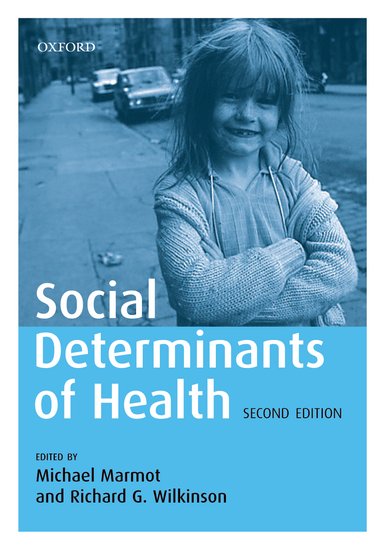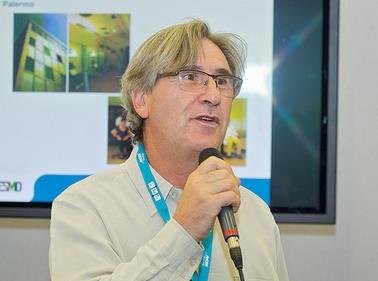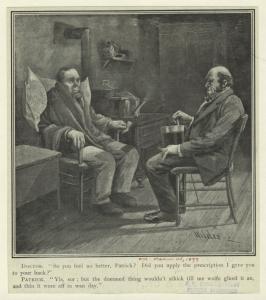new posts in all blogs
Viewing: Blog Posts Tagged with: Palliative Care, Most Recent at Top [Help]
Results 1 - 7 of 7
How to use this Page
You are viewing the most recent posts tagged with the words: Palliative Care in the JacketFlap blog reader. What is a tag? Think of a tag as a keyword or category label. Tags can both help you find posts on JacketFlap.com as well as provide an easy way for you to "remember" and classify posts for later recall. Try adding a tag yourself by clicking "Add a tag" below a post's header. Scroll down through the list of Recent Posts in the left column and click on a post title that sounds interesting. You can view all posts from a specific blog by clicking the Blog name in the right column, or you can click a 'More Posts from this Blog' link in any individual post.

By: Joe Couling,
on 6/19/2015
Blog:
OUPblog
(
Login to Add to MyJacketFlap)
JacketFlap tags:
Maps,
hospice,
elderly care,
OMO,
terminal illness,
*Featured,
Health & Medicine,
Palliative Care,
Online products,
Oxford Medicine Online,
end of life care,
Joe Couling,
terminal disease,
worldwide palliative care,
Add a tag
With a failing NHS and an ageing population in Britain, palliative care is a topic currently at the forefront of healthcare debate. Whether to abandon treatment in favour of palliation, is a challenging decision with profound implications for end-of-life care.
The post Palliative care around the world appeared first on OUPblog.

By: Joe Hitchcock,
on 5/29/2015
Blog:
OUPblog
(
Login to Add to MyJacketFlap)
JacketFlap tags:
Books,
Medical Ethics,
Science & Medicine,
Health & Medicine,
Palliative Care,
palliative medicine,
nathan cherny,
david currow,
future of palliative care,
marie fallon,
oxford textbook of palliative medicine,
russel portenoy,
stein kaasa,
Add a tag
The last two decades have witnessed truly remarkable growth in the field of palliative care. Such growth is challenging, and brings both uncertainties and optimism about the future. In this three-part blog, we’ll take a look at some of the complex issues of continuity, development and evolution in palliative medicine.
The post Facing the challenges of palliative care: continuity appeared first on OUPblog.

By: Meredith Sneddon,
on 9/19/2014
Blog:
OUPblog
(
Login to Add to MyJacketFlap)
JacketFlap tags:
Books,
Medical Mondays,
terminal illness,
*Featured,
Science & Medicine,
Health & Medicine,
Palliative Care,
end of life care,
Catherine Proot,
life to be lived,
Life to be Lived: Challenges and choices for patients and carers in life-threatening illnesses,
Michael Yorke,
Add a tag
Uncertainty is everywhere. There can hardly be a person alive who has not experienced it at some time. Indeed, as Shakespeare indicates in his play The Tempest (Act I) we are all submitted to “life’s uncertain voyage.” We may well find ourselves asking “What shall I do?” or “How should I react?”, familiar questions as we continue our voyage.
This common factor in human experience is heightened when the circumstances involve serious illness, whether for the patient or for those who care for them. Living with uncertainty affects all at the bedside. The patient longs for normality and yearns for safety. The family has to face unexpected disruption bringing new routines, responsibilities, and many new people into their lives. A whole new world seems to open up. A client once said, “It is like having a new job” referring to all the new things she had learnt following her husband’s terminal diagnosis.
The professional or volunteer carer, too, has to adjust to uncertainty. The progression of the disease is endlessly variable. There are no certainties in medicine, only likelihoods. This may place the carer under pressure to say something that will give patients and their families a sense of having a handle on their life, regardless of the seriousness of the condition. There are also the practical issues, often difficult and complex, about, for instance, discharge arrangements and future support. Working alongside the families, the carer must hold an appropriate balance between hope for the future alongside a realism about what is or could be involved.
Challenges and choices in life-threatening illnesses create a spectrum of strong feelings among those experiencing them. The patient may well ask “Will I ever be well again? What are they going to do to me? Can I cope with the noise and bustle of a hospital ward? Why has this happened to me?” Fear, anger, grief and helplessness are all present in some degree. Even time itself seems to drag amidst the pain and weakness, loss of ability and responsibility. The notion of self-worth can be seriously challenged. The present and the future may look bleak and insecure as compared with “normal” life. Many of the same feelings will be felt also by families, including anxiety about whether they will be able to cope with the new circumstances and the inevitable increase in financial costs.
The radical changes in circumstances can promote the reasonable question “Why me or us?” Disease is often understood to be a form of judgement, and where the patient has done their best, and in their own view, lived a “good life,” the question arises out of what is felt to be an unjust judgement and cruel sentence. People can feel rewarded, unjustly, by the disease, even if in some ways they have unconsciously contributed to its onset by excessive working, smoking, or drinking. The disease can also arise out of the environment in which the patient lives, or their genetic make-up, over which they have no control. The illness therefore becomes an unfair threat and obstruction in the mind of those involved whether as a patient or family member.
Major disease can not only radically change a person’s circumstances, but also their judgement, attitude, and mood. They can be changed as people. Medical experience can be overwhelming, distorting judgements and decisions, undermining relationships, and creating a deep sense of vulnerability. “Why me?” becomes a cry from the heart; a cry for help; a cry out of hopelessness. But it need not be.
We are all vulnerable. There is a fault in creation, just as there is wonder and genius. Both facets can be seen within scientific fact as well as religious and moral recognition. Disease can be judged as part of nature just as death is part of life. Such reality challenges the patient just as it does the doctor and researcher.
Such natural faults need to be accepted and worked with. They confront but they also inspire. Our uncertain voyage can involve major illness and its concomitants. A constructive but very difficult response can be to accept, remain positive and be grateful to those who are helping by their skills, support, and encouragement. Disease and disorder are part of the underbelly of creation of which we are all a part. “Why me?” can be changed to “Why not me?” The change in the question can bring about change in outlook and peace.
As Shakespeare reminds us of “life’s uncertain voyage”, we wrestle with uncertainty. Often, we hope, we may find resources which help us along the road. Close supportive relationships, a commitment to an ideal or an allegiance to a faith which inspires, even those quiet times of reflection and self-realization can prove invaluable. They all have a part to play in helping us to cope with the unknown. Self-confidence or lack of it can be instrumental in how we manage uncertainty, but neither can assure us that our thoughts and actions are right. Subsequent experience is often the only measure of that.
We can learn from experience — we can learn to live life fully, whatever the circumstances, even when we are uncertain as to what they may be or lead to. We will never know everything, and perhaps it requires a sense of peace to live with such uncertainty — a tough challenge, but one with a great reward.
Heading Image: Snowstorm by William Turner. Public Domain via Wikimedia Commons.
The post Life’s uncertain voyage appeared first on OUPblog.


By: Julia Callaway,
on 4/23/2014
Blog:
OUPblog
(
Login to Add to MyJacketFlap)
JacketFlap tags:
public health,
epidemiology,
*Featured,
Palliative Care,
module,
Online products,
Oxford Scholarship Online,
oso10,
Nutrition for Developing Countries,
Social Determinants of Health,
The Strategy of Preventative Medicine,
Education,
illustrations,
copyright,
Add a tag

Oxford Scholarship Online (OSO) launched in 2003 with 700 titles. Now, on its tenth birthday, it’s the online home of over 9,000 titles from Oxford University Press’s distinguished academic list, and part of University Press Scholarship Online. To celebrate OSO turning ten, we’ve invited a host of people to reflect on the past ten years of online academic publishing, and what the next ten might bring.
By Nicola Wilson
When I was invited to develop two lists for Oxford Scholarship Online, I jumped at the chance. From the perspective of a commissioning editor, digital publishing has extended the “life” of our copyrights indefinitely, and we no longer need to hold a book in physical print for it to continue to be available to our readers.
 The first module that I developed was “Public Health and Epidemiology,” back in 2008. The books contained in the module have been published by our medical department over the course of three decades, and many are now considered public health classics, such as Michael Marmot’s Social Determinants of Health, and Geoffrey Rose’s The Strategy of Preventative Medicine.
The first module that I developed was “Public Health and Epidemiology,” back in 2008. The books contained in the module have been published by our medical department over the course of three decades, and many are now considered public health classics, such as Michael Marmot’s Social Determinants of Health, and Geoffrey Rose’s The Strategy of Preventative Medicine.
The books that we chose to include on Oxford Scholarship Online present research and analysis of global health issues, and insight into the impact of diseases and conditions on populations. Several of the projects in the module have directly influenced policy planning and clinical attitudes to disease prevention and management, transforming scientific investigation methods and treatment approaches worldwide.
The biggest challenge in developing the module was the time that it took to clear permission to reproduce the material online. Many of the contracts and agreements that we held for our older books long pre-dated electronic resources, and we had to ask the authors and editors to sign contract addendums to allow us to proceed with publishing the books online. In some instances, authors had died since the book was published with us, so we needed to contact authors’ estates and ask surviving relatives to grant us permission to reproduce the material online.
In other cases, we needed to trace the ownership of third-party copyrighted material which was included in the books, so I became a detective, trying to identify the current owners of defunct publishers, some of which had changed their ownership through multiple company mergers over a thirty-year period. What naively started out as a few hours of looking through dusty hard-copy records in our basement, turned into a few months of internet heavy investigation and phone calls to numerous publishers’ Rights departments.
The amount of work that clearing permissions created turned it into an “all hands on deck during evenings and weekends” project. Over half of the medical department pitched in extra hours over a four-month period to ensure that we hit the launch deadline that we had been set. (Never underestimate the power of food to complete a project on schedule.)
The trickiest book that we worked on was Nutrition for Developing Countries, which was originally published in 1993 before our copyright clearance rules were defined. It’s full of unique hand drawn illustrations of Tanzanian families, different types of food, and easy-to-read graphs. It was specifically presented in such a way that could be used as a “show and tell” book by doctors working with non-literate families in Africa. For example, they could point at the illustrations of healthy foods in the book and explain to nursing mothers how eating those foods would help their babies to grow strong and remain healthy.
However, our challenge was trying to find out who had drawn the pictures, and subsequently who owned the copyright for them. Many of the illustrations had been drawn by a friend of one of the editors, and given to the editor as a wedding present. Did this mean that the copyright was held by the editor, or was it held by the artist? No copyright permission had ever been signed to state either way, and we had no contact details for the artist to enquire with them directly. We contacted the book editor, but they were often working in areas of Africa where Internet access was non-existent, so it took around four months to liaise with the editor and the artist (whom the editor contacted on our behalf), and acquire permission from both of them (to cover all legal bases) to use the illustrations in a digital form.
A major benefit of putting books online is the global availability of the information they contain; practitioners and academics can access and use these books online wherever they are in world. It’s wonderful that public health and epidemiology books attract a global readership, and through their availability online, they will have an even broader reach, and continue to help develop and improve research and treatment for many years to come.
Nicola Wilson is Commissioning Editor for the “Palliative Care” and “Public Health and Epidemiology” modules on Oxford Scholarship Online.
Subscribe to the OUPblog via email or RSS.
Subscribe to only education articles on the OUPblog via email or RSS.
The post Developing a module for Oxford Scholarship Online appeared first on OUPblog.


By: Kirsty,
on 3/27/2014
Blog:
OUPblog
(
Login to Add to MyJacketFlap)
JacketFlap tags:
nathan,
*Featured,
oxford journals,
pain relief,
Science & Medicine,
Health & Medicine,
cancer treatment,
Palliative Care,
palliative,
oncology,
annals of oncology,
cancer pain,
cancer pain management,
ESMO,
global opioid access,
global opioid policy initiative,
GOPI,
nathan cherny,
opioids,
pain management,
opioid,
gopi,
cherny,
cancer,
Journals,
Add a tag
With the WHO Executive Board recently adopting the resolution ‘Strengthening of palliative care as a component of integrated treatment within the continuum of care’, which is to be referred to the World Health Assembly for ratification in May, Nathan Cherny puts the current global situation in perspective and lays out the next steps needed in this crucial campaign to end suffering to millions.
By Nathan Cherny
In the curious trail that has been my life thus far, some would say that there was a certain inevitability that I would end up working for cancer patients’ right to access medication for adequate relief of their suffering. As a medical student I suffered terrible cancer-related pain from a thoracotomy to remove lung metastases for testicular cancer. As an oncologist and palliative care physician in the Middle East, my current work allows me to look after both Israeli and Palestinian patients. My profession has also taken me to caring for many “medical tourists” from Eastern Europe as well as foreign workers from Thailand, India, Nepal, and the Philippines. Oh, and I was born on Human Rights Day, 10 December 1958!
I hate pain. I am appalled by the global scope of untreated and unrelieved cancer pain. At the initiative of its Palliative Care Working Group, the European Society for Medical Oncology (ESMO) has taken this on board as a global priority issue. ESMO facilitated the first comprehensive study to evaluate the barriers to pain relief in Europe, which highlighted the distressing situation in many Eastern European counties.

Nathan Cherny
In follow-up, a large collaborative group was formed for an even more ambitious study. The Global Opioid Policy Initiative (GOPI) combined the work and talents of ESMO, the European Association for Palliative Care (EAPC), the Union for International Cancer Control (UICC), the Pain and Policies Study Group (PPSG) of the University of Wisconsin, and the World Health Organization (WHO), and 17 other leading oncology and palliative care societies worldwide.
The GOPI studied opioid availability and accessibility for cancer patients in Africa, Asia, the Middle East, Latin America, and the Caribbean. The results were published in a special supplement of the Annals of Oncology in December 2013. The seven manuscripts in the special issue highlighted the global problem of excessively restrictive regulations regarding the prescribing and dispensing of opioids — ‘catastrophe born out of good intentions’.
In order to prevent abuse and diversion, most patients with genuine need to relieve severe cancer pain cannot access the appropriate medication. Millions of people around the world end their lives racked in pain, harming not only the patients but also their families who bear witness to this torturous tragedy.

On 23 January 2014, the WHO Executive Board adopted a stand-alone resolution on palliative care which will be referred to the World Health Assembly for ratification in May 2014. This is great news for all those campaigning to improve access to medication to end suffering to millions. There is still much to be done on this long, winding road, yet we can still be proud. Thanks to our united efforts and the evidence provided by the GOPI data, our voices are being heard.
Overregulation of opioids is not the only problem impeding global relief of cancer pain. In many places around the world there is major need to: educate clinicians in the assessment and management of pain; educate the public regarding the effectiveness and safety of opioid analgesia in the management of cancer pain; and secure supplies of affordable medications.
The next steps: The GOPI Collaborative Group is now writing to Ministers of Health in the many countries where we have identified major over-regulation with a 10 point plan to help redress the problem, covering education, restrictions, limits, professional standards, monitoring, and prescription.
Tell us what actions you can take to incorporate these next steps in your country. Can you contact your Ministry of Health? What could be inspirational for others to know? We make more noise if we all shout together.
Nathan Cherny was the Chair of the ESMO Palliative Care Working Group since 2008 and has been a member of the working group since its inception in 1999. He was the main driving force in the creation of the ESMO Designated Centre of Integrated Oncology and Palliative Care Programme which was launched in 2003 and last year had its 10th Anniversary. Nathan also wrote the ESMO 2003 Position Paper: ESMO Policy on Supportive and Palliative Care. Watch the Advocacy in Action 2013 video on: Palliative Care & Quality Of Life Care: Redefining Palliative Care.
Opioid availability and accessibility for the relief of cancer pain in Africa, Asia, India, the Middle East, Latin America and the Caribbean: Final Report of the International Collaborative Project was published as an Annals of Oncology supplement in December 2013.
Annals of Oncology is a multidisciplinary journal that publishes articles addressing medical oncology, surgery, radiotherapy, paediatric oncology, basic research and the comprehensive management of patients with malignant diseases. Follow them on Twitter at @Annals_Oncology.
Subscribe to the OUPblog via email or RSS.
Subscribe to only health and medicine articles on the OUPblog via email or RSS.
Image credits: (1) Photo of Nathan Cherny, via ESMO; (2) GOPI banner, via Global Opioid Policy Initiative/ESMO
The post Global Opioid Access: WHO accelerates the pace, but we still need to do more appeared first on OUPblog.


By: Nicola,
on 1/23/2013
Blog:
OUPblog
(
Login to Add to MyJacketFlap)
JacketFlap tags:
liverpool,
holistic,
end of life,
*Featured,
Science & Medicine,
Health & Medicine,
Palliative Care,
palliative,
oncology,
ann goldman,
dr richard hain,
end of life care,
LCP,
liverpool care pathway,
paediatric care,
paediatrics,
palliative care for children,
palliative medicine,
richard hain,
stephen liben,
pathway,
hain,
service’,
paediatric,
in paediatric,
Add a tag
By Richard Hain
One of the things that has always puzzled me is the number of palliative care services that have the word ‘pain’ in the title. Why do we concentrate so much on that one, admittedly unpleasant, symptom? Why ‘Pain and Palliative Care Services’ rather than, for example, ‘Vomiting and Palliative Care Service’ , ‘Dyspnoea and Palliative Care Service’, or even ‘Sadness, Anger, Existential Anguish and Palliative Care Service’?
That’s the problem with trying to describe palliative care. The whole point of palliative care is that it is holistic – a word that has acquired a certain flakiness, but which in reality simply refers to looking at the wholeness of a person, rather than focusing on only one domain (such as physical symptoms), or even one specific symptom (such as pain). But the purpose of a definition, by definition, is to set limits around a concept. There is a sense in which defining something as holistic is a contradiction in terms. Yet that is what we have to do in palliative care, if we are to communicate some sense of the task of caring for children and adults with life-limiting conditions; a sense that encompasses both the idea that it is holistic and that it is specialist (there are some things you need to learn to do to do it well).
The clue to the nature of palliative care is in the name: ‘care’. It is a care whose aim is not cure. In the United Kingdom, we have recently seen the results of misunderstanding what palliative care is all about. As in most countries that are resource-rich (or, at least, would have considered themselves as such before the global recession), the United Kingdom sometimes struggles to avoid the temptation to over-intervene. Even where it is overwhelmingly unlikely that an intervention will help – such as when death is inevitable – we in resource-rich countries can’t help ourselves. Sometimes we have to do something even if we know it is more likely to damage a patient – considered holistically – than it is to help them. That is not because anyone is trying to be cruel, but simply because if you are a doctor faced with a very sick patient, it is hard not to intervene, even when the latter option would truly be the right thing to do.

So, if you want to improve the lives of people who are close to death, one really good way to do it is to offer doctors more support in doing less, and in doing it well. The Liverpool Care Pathway for the Dying Patient (LCP) was designed to do exactly that. Its sole purpose has been to protect dying patients from the pain and indignity of useless interventions around the end of their life. Sadly, holding back on those interventions that will harm people can sometimes look, at least to the untutored eye, very like deliberately killing them. Even some philosophers find it tricky to admit that killing someone is not at all the same thing as refusing to try to prevent their inevitable death. So perhaps it is not surprising to find that, in trying to see who were the baddies here, the Daily Mail crashed clumsily down on the wrong side, screaming that babies were being euthanised using the Liverpool Care Pathway. But it isn’t true.
The Liverpool Care Pathway hasn’t really found its way into children’s care, despite the Daily Mail‘s assertions. That’s because it was designed for adults, mainly with cancer, rather than for children and the much larger range of conditions that can cause their death. There’s nothing wrong with the concept. As in adults, the art and science of palliative care in children is to preserve wellbeing as far as possible, using all the tools at our disposal. To do that often means introducing some interventions – some medication, perhaps, or the opportunity to talk about fears, or the chance to decide where you or your child should die. But improving wellbeing can equally mean withholding interventions that would be likely to cause an overall damage to it. Good paediatric palliative care must mean knowing what procedures to leave out, as well as knowing which ones to introduce. Whatever some moral philosophers say, there is a big difference between actively hastening someone’s death, and not trying fruitlessly to prevent death when to do so would mean making life worse. And whatever the Daily Mail may confidently claim, putting a patient on the Liverpool Care Pathway is not the same as euthanasia. Care pathways are pointers to the best way to avoid careless and harmful over-intervention. Properly used, palliation and pathways do exactly what they say on the tin; they care.
Dr Richard Hain is Consultant and Lead Clinician at the Wales Managed Clinical Network in Paediatric Palliative Care Children’s Hospital, and Visiting Professor at the University of Glamorgan, and Honorary Senior Lecturer at Bangor University. He is co-editor of the Oxford Textbook of Palliative Care for Children, Second Edition (OUP, 2012), with Ann Goldman and Stephen Liben.
Subscribe to the OUPblog via email or RSS.
Subscribe to only health and medicine articles on the OUPblog via email or RSS.
Image credit: Old and young hands photo by SilviaJansen via iStockPhoto.
The post Palliative care: knowing when not to act appeared first on OUPblog.


By: Alice,
on 2/7/2012
Blog:
OUPblog
(
Login to Add to MyJacketFlap)
JacketFlap tags:
manitoba,
healthcare,
patient,
*Featured,
Science & Medicine,
Health & Medicine,
Dignity Therapy,
Diving Bell and the Butterfly,
Harvey Max Chochinov,
Jean Dominique Bauby,
Palliative Care,
patienthood,
personhood,
palliative,
bauby,
chochinov,
Add a tag
by Harvey Max Chochinov
A senior colleague recently shared with me the trials of going through a bout of cancer treatment. Physicians are not known to make the best patients and the transition he described was not an easy one. At one point he said, “I wanted to hang a sign over my bed saying ‘P.I.P.’ — Previously Important Person.” To be frank, I was astounded. This man is not only a highly respected and seasoned clinician, but an internationally lauded researcher and medical leader, whose accomplishments have garnered various recognitions and lofty acclaim. And yet, being a patient, in spite of what he described as excellent care, quickly led to feeling that “who he was” was largely overshadowed by “what he had.”

Source: New York Public Library
This encounter started me thinking about the challenges of being a patient. Those of us who practice medicine spend our entire career honing skills to look after patients. Yet, no one wants to be a patient, because patienthood costs, and the more care you need, the higher the cost. Most of us are prepared to pay whatever it takes to restore health or receive some modicum of comfort or healing. But let there be no doubt, there is a price and ‘P.I.P.’ seems to implicate just what kind of emotional currency is at stake.
The word patient comes from the Latin patientem, meaning someone who is sick or suffering. The word patience — to bear or endure without complaint — shares the identical Latin etymology. Perhaps this common derivation suggests that it takes patience to be a patient. But what is it that patients must bear and endure without complaint? Think of even your most trivial recent health care encounter. Having your call put on hold; being kept waiting for an appointment; having to disrobe or expose private information; any of these might lead you to bemoan that you felt “just like a patient” — without a doubt, the most common critique of any health-care encounter. Feeling “like a patient” means feeling defined based on a problem or diagnosis. Personhood thrives on the expression of individual identity and being able to exercise freedom and choice. Patienthood is based on diagnostic specificity; it demands adherence to certain clinical or institutional conformities and routines, in return for which it provides organ or disease specific, evidence-based options.
A woman I helped look after many years ago with leukemia was admitted for treatment to our city hospital. Being young and fiercely independent, she struggled, not merely with having to face a life threatening illness, but the sudden assault on her sense of who she was. Almost overnight, she had to relinquish her freedom and submit to strict infection controls, including isolation on the bone marrow transplant unit. Like any patient, she was assigned a chart number, given a standard plastic wrist identification bracelet, and issued the usual, drab hospital garb. Her treatment, tailored according to detailed laboratory findings and genetic markers, was highly aggressive and invasive. One morning after having encountered her share of hardships, including total hair loss, nausea and various nasty complications, she emerged from her room wearing a beautiful, full-length blue satin nightgown. Those of us who worked closely with her realized immediately that this was no frivolous gesture. In fact, this was a way of asserting herself, a way of saying: “This is who I am,” “I am more than my white counts,” “Please, see me.”
Similarly, Jean Dominique Bauby, the former editor of Elle





 The first module that I developed was “Public Health and Epidemiology,” back in 2008. The books contained in the module have been published by our medical department over the course of three decades, and many are now considered public health classics, such as Michael Marmot’s Social Determinants of Health, and Geoffrey Rose’s The Strategy of Preventative Medicine.
The first module that I developed was “Public Health and Epidemiology,” back in 2008. The books contained in the module have been published by our medical department over the course of three decades, and many are now considered public health classics, such as Michael Marmot’s Social Determinants of Health, and Geoffrey Rose’s The Strategy of Preventative Medicine.


